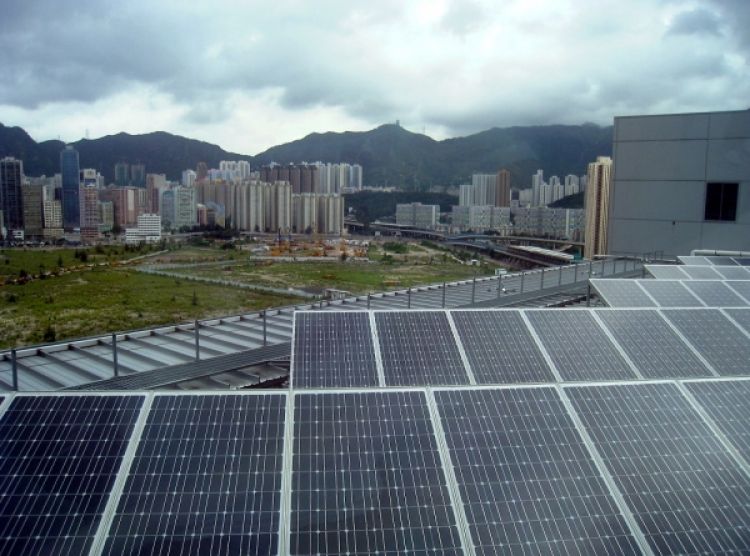 Distributed solar in Hong Kong. Credit: Wikimedia Commons, Wing1990kh
Distributed solar in Hong Kong. Credit: Wikimedia Commons, Wing1990kh China added 11.4GW of solar capacity in the first half of 2019, according to figures released by the country’s National Energy Administration.
It’s less than half the capacity that was installed in the first half of 2018, when the agency pegged new solar installations at 24.3GW. It’s also a far cry from 2017 numbers, when total capacity skyrocketed to 53GW.
Utility-scale projects were responsible for a paltry 6.82GW of new capacity in the first half of 2019; the remainder was from distributed generation.
The Chinese government abruptly nixed its pre-existing feed-in tariff scheme in May 2018, leaving a policy vacuum that plunged utility-scale solar into limbo. However, it finally launched its long-awaited national solar subsidy mechanism and installations in June, and installations are expected to snowball in the months to come.
In the first iteration of its new subsidy programme, the government awarded nearly 22GW of solar capacity in a reverse auction earlier this summer.
The Asia Europe Clean Energy Advisory (AECEA) estimates that the new scheme will result in 38-42GW installed in the country this year.
Solar PV installations in the first half of 2019 were clustered most heavily in the country’s north and northeast regions, which each accounted for more than 30% of installed capacity. Cumulative PV generation stood at 185.5GW, and utility-scale plants make up 130.6GW of that number.